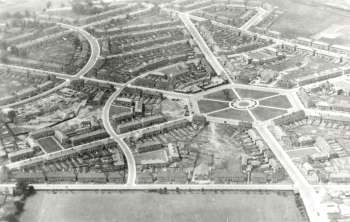History of Bellingham

The name means �the water-meadow belonging to Beora�s people�. It was the name of the medieval manor in this area, and survived in Bellingham Farm. It was revived in 1892 as the name of a new railway station, then in open country, on the Nunhead and Shortlands Railway.
After the First World War the London County Council began to build large estates on the edge of the built-up area of London to ease overcrowding and assist slum clearance. Downham Estate, close to Bellingham, is a typical example.
Because there was plenty of land available, most of the dwellings could be two-storey houses with gardens (rather than flats) interspersed with open spaces and trees. Provision was made for schools, shops, churches, parks and other amenities.
The land for the Bellingham Estate (Bellingham Farm and part of White House Farm) was bought in 1920, and building of the main estate was completed in 1923. Historical names were chosen for the roads. Some were connected with King Alfred, who was thought to have been lord of the manor of Lewisham. Others were the names of old houses, fields, and mills in the area. The inhabitants came from crowded inner London areas, mainly from Deptford and Bermondsey.
The extension south of Southend Lane was built between 1936 and 1939. Here more flats were built, for economy, and to meet the pressing need for housing.







